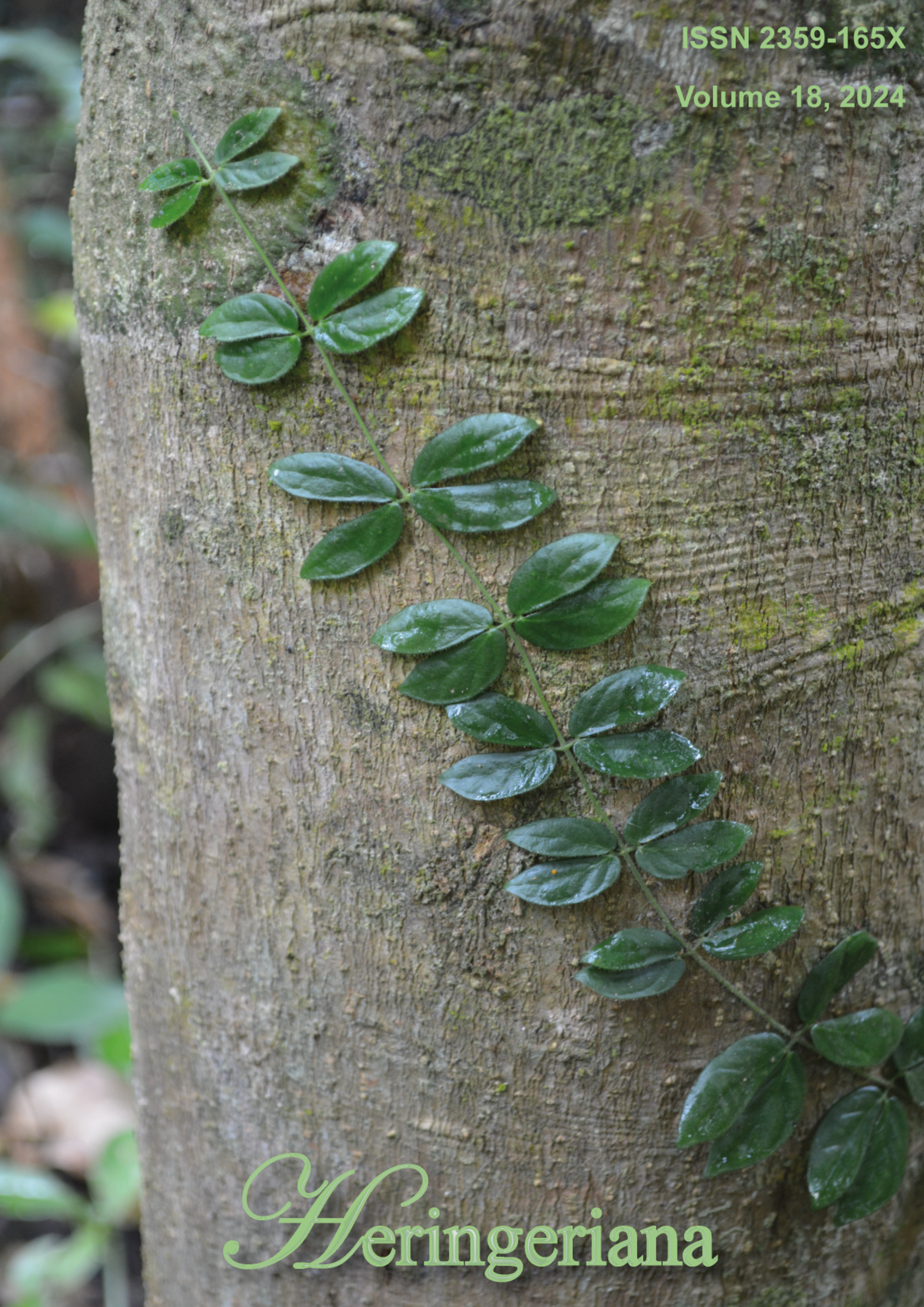Need for the implementation of Sustainable Management Plans for the Conservation of Araceae in Brazil
DOI:
https://doi.org/10.70782/heringeriana.v18i1.918049Abstract
This article addresses the sustainable management of endangered ornamental plant species in Brazil. It highlights the legal framework allowing the harvest of fruits and seeds from natural forests, with regulations to protect species. In Espírito Santo, sustainable exploration plans include compensation actions for threatened palms. The ornamental trade of endangered species, particularly in the Araceae family, has surged during the COVID-19 pandemic, leading to illegal sales. Some local producers use traditional methods, like vegetative propagation and seed collection, to conserve these species. The article emphasizes the importance of combining local knowledge with scientific research for effective conservation. It also suggests using experimental farms and private reserves for sustainable research and promoting species with geographical indication seals to increase market value. This approach aims to support sustainable biodiversity use.
References
Assis, M.C. & Sakuragui, C.M. (2005) Coleta e conservação de germoplasma de plantas ornamentais, com ênfase em Alstroemeriaceae e Araceae. In: Walter, B.M.T., Cavalcanti, T.B. (Eds.) Fundamentos para a coleta de germoplasma vegetal. Embrapa Recursos Genéticos e Biotecnologia, Brasília, pp. 516-530.
Brasil. (1996) Lei 9.279 de 14 de maio de 1996. Regula direitos e obrigações relativos à propriedade industrial. Diário Oficial da União 93: 8353-8366. Disponível em: https://www.planalto.gov.br/ccivil_03/leis/l9279.htm
Brasil. (2012) Lei Federal nº 12.651 de 25 de maio de 2012. Dispõe sobre a proteção da vegetação nativa e dá outras providências. Disponível em : https://www.planalto.gov.br/ccivil_03/_ato2011-2014/2012/lei/l12651.htm
Calazans, L.S.B., Valadares, R.T. & Sakuragui, C.M. (2024) Sobrexploração de Philodendron spiritus-sancti G.S.Bunting e a necessidade de implantação de uma política para a conservação de imbés. Paubrasilia 7: e150. https://doi.org/10.33447/paubrasilia.2024.e0150
Courchamp, F., Angulo, E., Rivalan, P., Hall, R.J., Signoret, L., Bull, L. & Meinard, Y. (2006) Rarity value and species extinction: the anthropogenic Allee effect. PLOS Biology 4(12): e415 https://doi.org/10.1371/journal.pbio.0040415
Espírito Santo. (2013) Instrução Normativa IDAF nº 003, de 31 de julho de 2013. Institui as Normas de Plano de Exploração Sustentável Simplificado para Extração do Fruto da Palmeira Juçara (Euterpe edulis). Disponível em: https://idaf.es.gov.br/Media/idaf/Documentos/Legisla%C3%A7%C3%A3o/GELCOF/IN%20Idaf%20n%C2%BA%20003,%20de%2031%20de%20julho%20de%202013.pdf
IBAMA. (2021a) Operação impede tráfico internacional de espécie rara da Mata Atlântica. Instituto Brasileiro do Meio Ambiente e dos Recursos Naturais Renováveis. Disponível em: https://www.gov.br/ibama/pt-br/assuntos/noticias/2021/operacao-impede-trafico-internacional-de-especie-rara-da-mata-atlantica (acesso: 15 Maio 2024).
IBAMA. (2021b) Espécies resgatadas do tráfico vão para o Jardim Botânico (RJ). Instituto Brasileiro do Meio Ambiente e dos Recursos Naturais Renováveis, gov.br Brasil. Disponível em: https://www.gov.br/ibama/pt-br/assuntos/noticias/2021/especies-resgatadas-do-trafico-vao-para-o-jardim-botanico-rj (acesso: 15 Maio 2024).
Mayo, S.J. (1991) A Revision of Philodendron Subgenus Meconostigma (Araceae). Kew Bulletin 46(4): 601-681. https://doi.org/10.2307/4110410
UNEP. (2020). New report looks at the illegal trade of plants and animals. Programa das Nações Unidas para o Meio Ambiente. Disponível em: https://www.unep.org/news-and-stories/story/new-report-looks-illegal-trade-plants-and-animals (acesso: 04 Junho 2024).
Downloads
Published
How to Cite
Issue
Section
License
Copyright (c) 2024 Luana S.B. Calazans, Rodrigo Theófilo Valadares, Alexandre Magno, Cassia Mônica Sakuragui

This work is licensed under a Creative Commons Attribution 4.0 International License.
By submitting, the authors declare that they have not submitted the work to another journal and agree to have their article published under a Creative Commons Attribution 4.0 International BY License (CC BY 4.0), which means that authors retain ownership of the copyright but anyone can use the published content provided the original authors and source are cited. The scientific, orthographic and grammatical content is the full responsibility of the authors.








